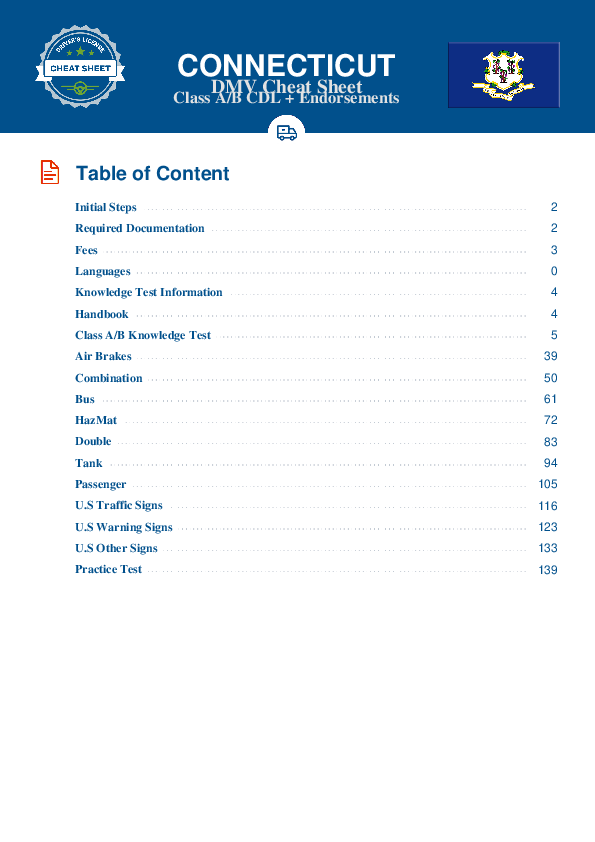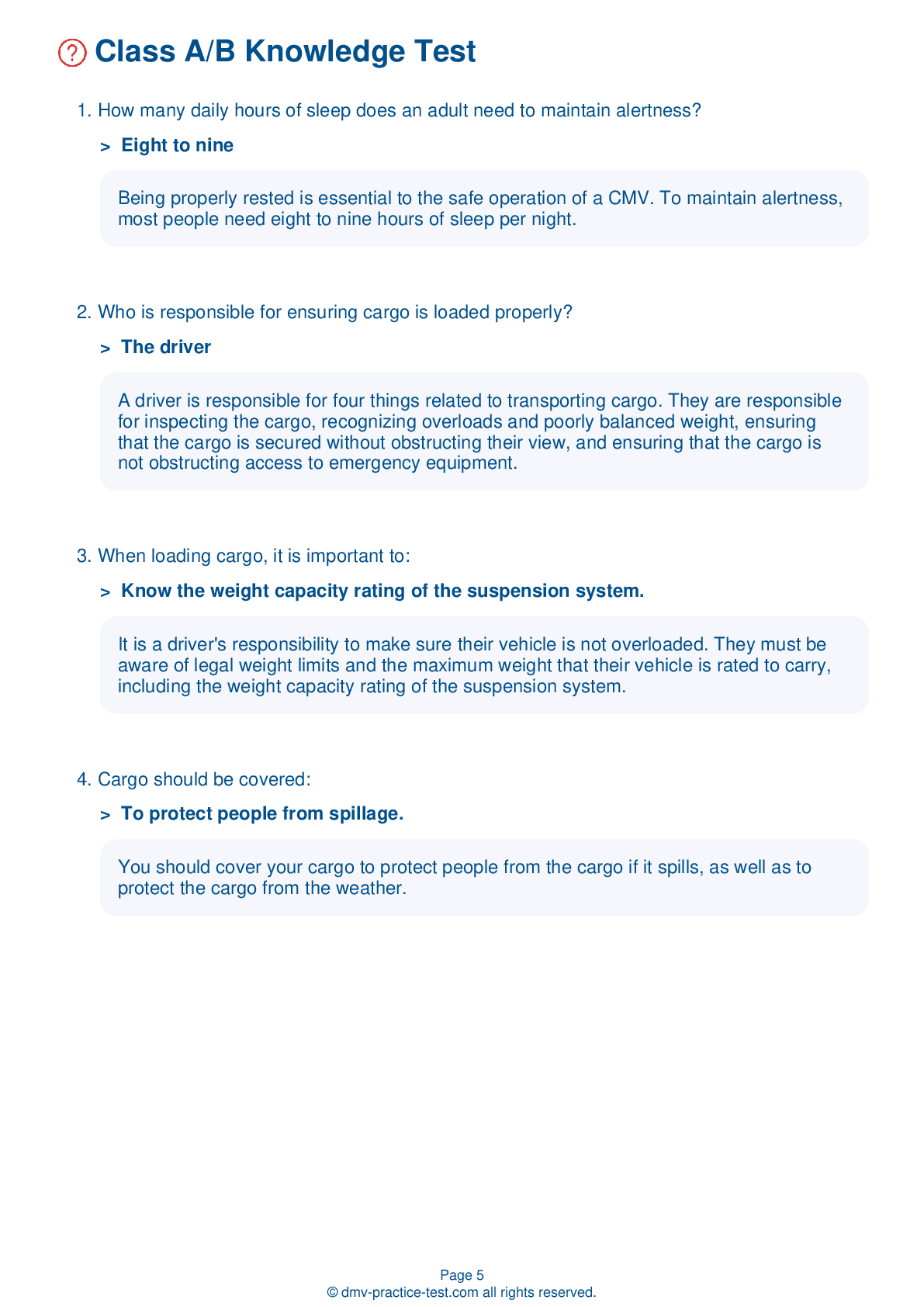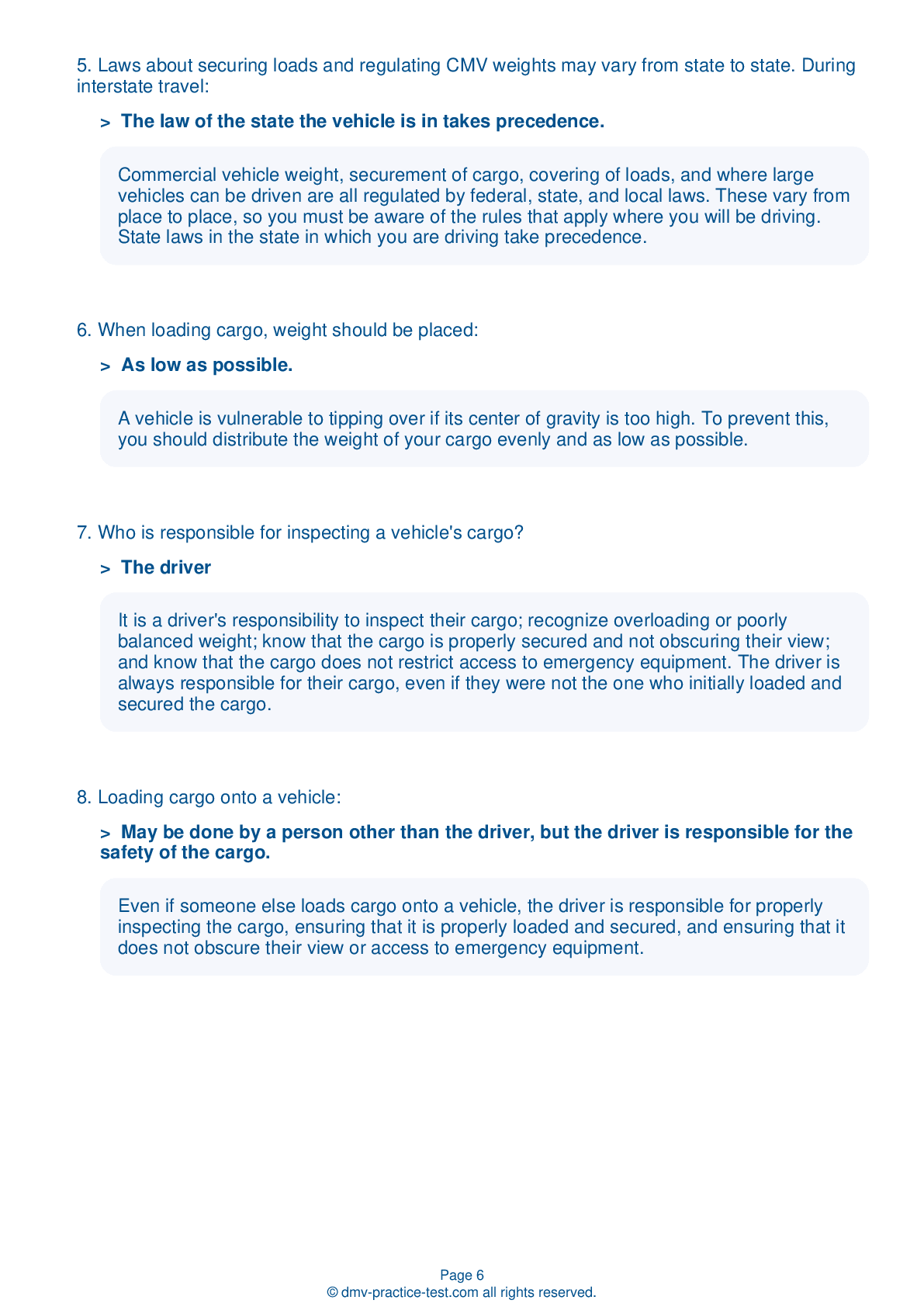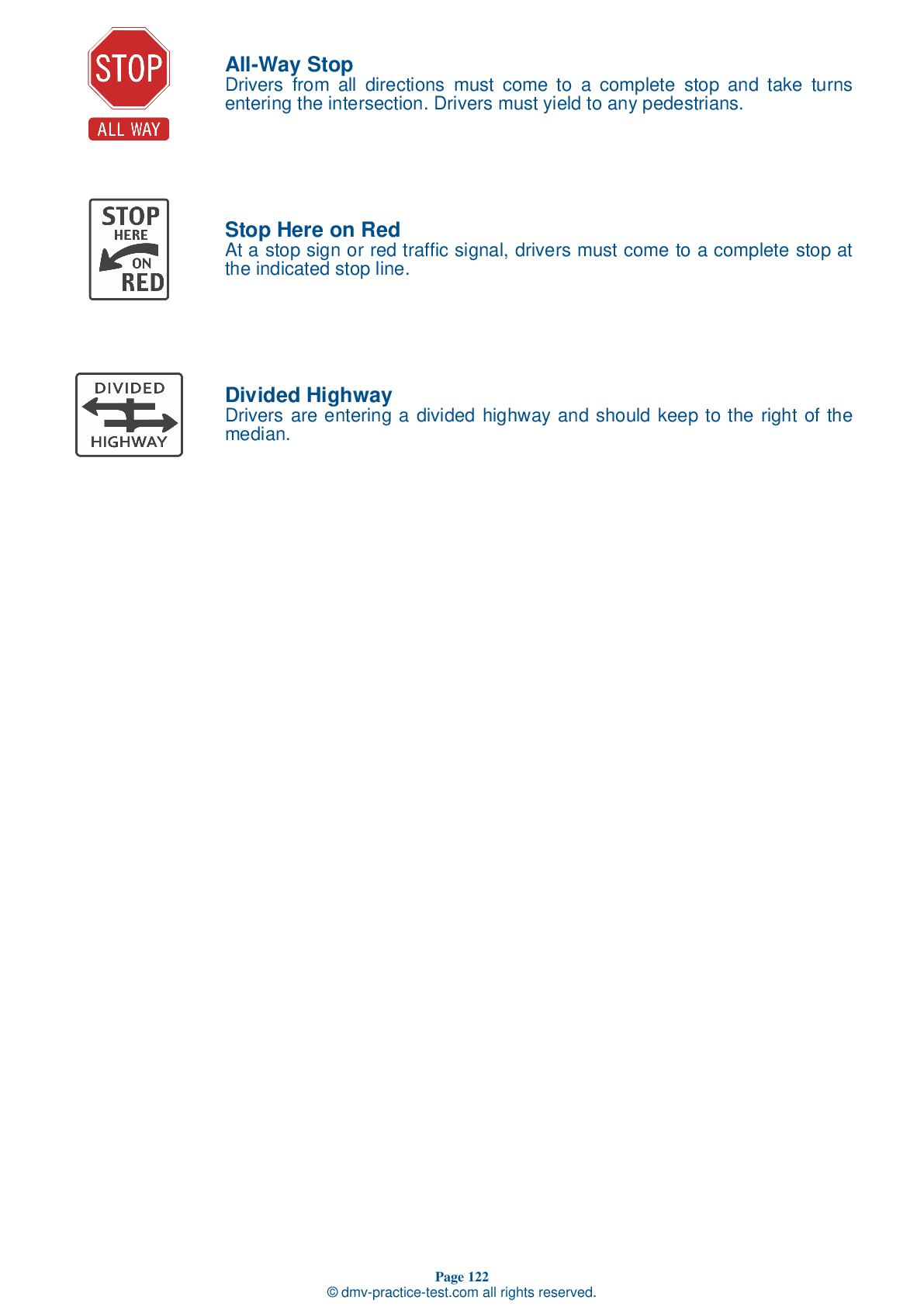Passenger Endorsement | Connecticut 2025 #2 Page 2 of 3
Train for FREE with our Connecticut CDL passenger endorsement practice test online. The official exam test consists of several obligatory parts, with all of them checking your knowledge of different blocks of road rules. If you need to obtain a CT DMV passenger endorsement in 2025, practice as much as possible. Free sample tests published on our website will help you check and improve your knowledge and boost your grades. Please bear in mind that DMV requirements for issuing a CDL permit with passenger endorsement may vary from state to state.
8 . Alcohol is removed from the body:
The liver removes alcohol from the body at a fixed rate that cannot be accelerated through common tricks, such as drinking coffee or taking a cold shower. The only way to sober up after drinking is to give your body the time it requires to process the alcohol out of your system.
9 . Emergency roof hatches on a bus:
On a bus, it is permissible to lock some emergency roof hatches in an open position to allow in fresh air. However, this should not be a regular practice.
10 . A vehicle should be equipped with all of the following, except:
Commercial vehicles should always carry the proper emergency equipment. Be sure your vehicle is equipped with at least one fire extinguisher; spare electrical fuses, unless the vehicle is equipped with circuit breakers; and warning devices for parked vehicles, such as warning triangles, fuses, or liquid burning flares.
11 . If feeling sleepy while driving, you should:
If you begin to feel sleepy while driving, the only safe response is to stop driving and get some sleep. Attempting to fight off exhaustion is dangerous and a major cause of fatal crashes. Stimulants are not a safe solution because they may help keep you awake but will not make you more alert. Once stimulants wear off, you will be even more tired than you were originally.
12 . When exiting a vehicle, it is important to maintain ____ with your vehicle at all times.
As you exit your vehicle during the basic vehicle control skills test, you must face the vehicle and maintain three points of contact at all times. If your testing vehicle is a bus, you must maintain contact with the handrail. Exiting the vehicle incorrectly may result in automatic failure of the basic control skills test.
13 . When approaching a railroad crossing while operating a bus, you should:
A bus driver should stop between 15 and 50 feet before any railroad crossing and check for trains before proceeding across the tracks. The driver may open the door to improve their ability to see or hear any approaching trains.
14 . When conducting a vehicle inspection, you must show each of the following, except:
When checking the oil pressure gauge as part of a vehicle inspection test, you must ensure that it is working. The gauge should show increasing or normal oil pressure, or the oil pressure warning light should turn off. If equipped with one, the oil temperature gauge should begin a gradual rise to the normal operating range.
See the exact questions that will be on the 2025 Connecticut DMV exam.
99.2% of people who use the cheat sheet pass the FIRST TIME
Lillian MCcranie explains how our CDL study guide was helpful in passing the exam and recommends it to everyone.
Cameron tells us how he purchased the CDL exam, and found it to be a useful tool which helped him pass the exam and find a job.



